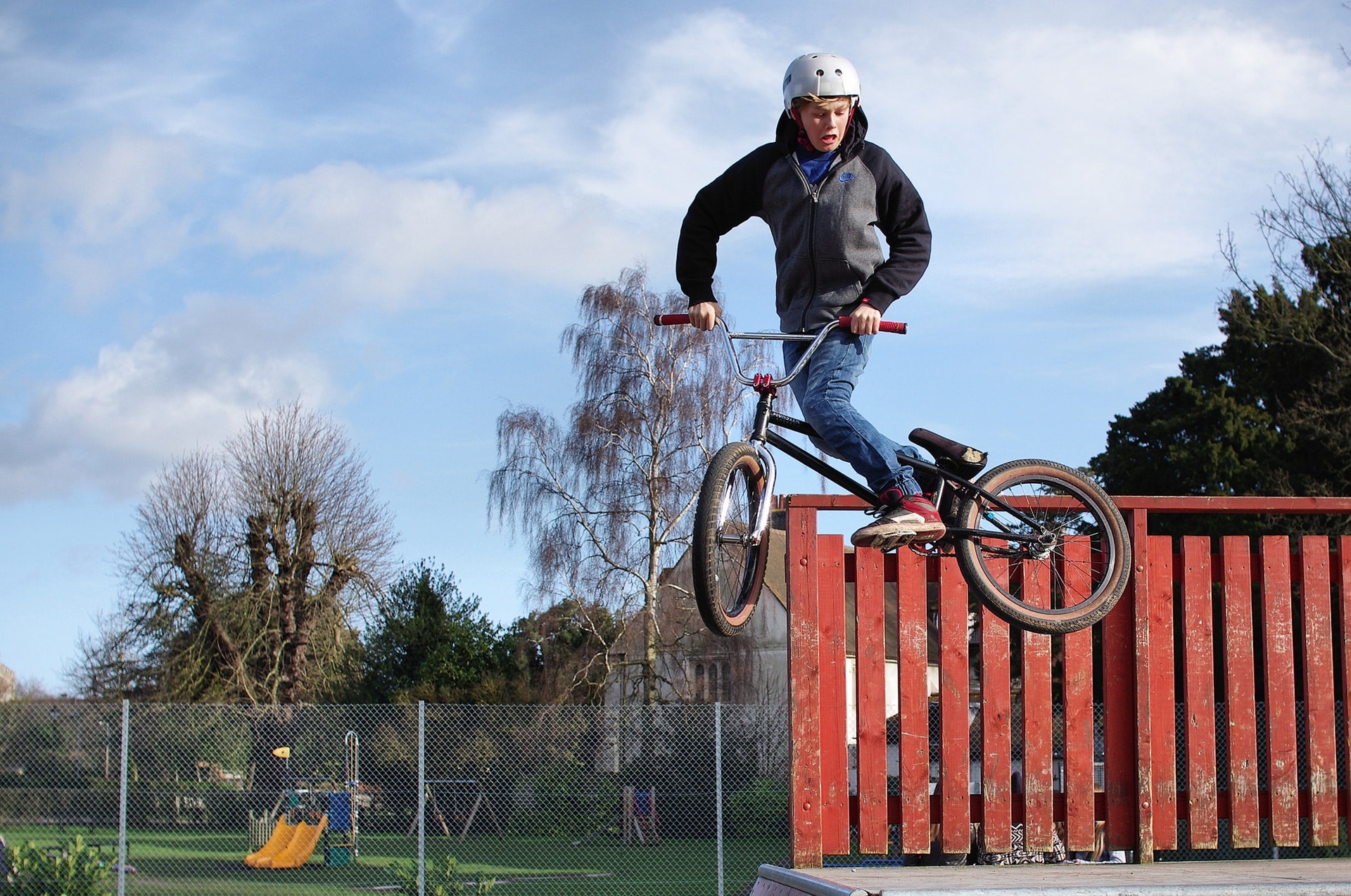BMX bike and mountain bikes are both on the adrenaline side of biking. They each are so much fun but which is right for you?
Which one works best really depends on your situation. These bikes don’t frequently cross paths (couldn’t resist the pun) with each other. Both bikes excel in their own environment but what makes these bikes so different?
Frame
BMX Bike
BMX frames are built for all business. They need to be strong and rigid and able to withstand considerable jumps and such which product a lot of stress on the frame when landing. These bikes are only going to be used for short runs so they need to stay simple and light so the rider can do all of the tricks.
Mountain Bike
Mountain bikes are meant to perform for 20-30 minutes straight. The purpose with the bigger wheels and suspension is to take up the bumps and shocks along the course so having some flex to the flame is fine. Typically, mountain bikes are not jumping more than a few feet off of the ground.
Most riders have plenty of supplies in a backpack so having things like a repair kit and water bottles attached right onto the bike itself is perfectly normal.
Suspension
BMX Bike
BMX bikes have no suspension. The idea is to fully transfer as much power as possible to the wheels and typically the suspension will waste some of this energy. These bikes are also usually on more predictable courses that don’t have the need for suspension. That and the weight savings make this the norm for BMX bikes.
Mountain Bike
Mountain bikes go over sizeable terrain. For much of the terrain when going down a mountain, it’s always rough so a full suspension is a must. For many mountain bikes, the front suspension can move up to 10 inches to turn rough, technical terrain into a fairly smooth ride.
Wheels and Tires
BMX Bike
These bikes have a standard wheel size of 20 inches. This keeps the wheels light and agile as BMX bikes tend to be more for stunt and trick riding.
For BMX races, the lighter wheel allows the bike to accelerate faster for an edge in the competition.
Mountain Bike
Mountain bikes usually have 29 inch wheels so the bike can ride right over things like rocks and branches. These are so common that with any wheel smaller the wheel may catch on the obstacles and throw the rider over the handlebars.
Brakes
BMX Bike
BMX bikes typically have caliper brakes on the front and rear. The rear is used for main braking or in conjunction with the front brakes. The front brakes are typically only used by themselves for balancing tricks.
Mountain Bike
Mountain bikes have to content with wet, muddy, leafy conditions. With conditions like that, gunk can get in caliper brakes that leave the brakes useless. Many newer mountain bikes come with disc brakes that mount in the center of the wheel and are usually unaffected by biking conditions and provide a superior braking ability.
Gearing
BMX Bike
BMX bikes always have one gear. While the actual gear size can vary based on bike size, rider power, and the course, it is still always just the one gear.
Mountain Bike
Mountain bikes frequently have 20+ gears to leave the rider many different gear choices for varying conditions. The first gears are used for uphill climbing and generally the angle of the hill and the energy of the rider are what dictates what gear gets used.
Saddle Position
For both BMX bikes and mountain bikes, the rider sits fairly straight up for the same reason: the need to shift weight quickly to keep the bike balanced.
However, the seat posts are very different between the two bike types. Typically BMX bikes just have the one fixed seat position. On a mountain bike, it may be fixed or it may have a dropper post so that the seat position can be changed quickly for either long rides or quick ascents or descents where the bike at normal height will affect the ability to shift weight to keep balance.
Pedals
Both bikes frequently offer both regular pedals as well as clipless ones that clip into the pedals to keep your biking shoes stuck to the pedals.
Which Bike Is Right For You?
BMX bikes and mountain bikes are both for high-adrenaline riding but they are different enough that they are used in different places so if you are looking to do both activities, the best bet is to get one of each.
To start off with, choose which sport you’d like to participate in first and get that bike first. Mountain bikes are a great starting point because you can use them on mild trails to build up skills and work into more technical terrain as your skills advance.






